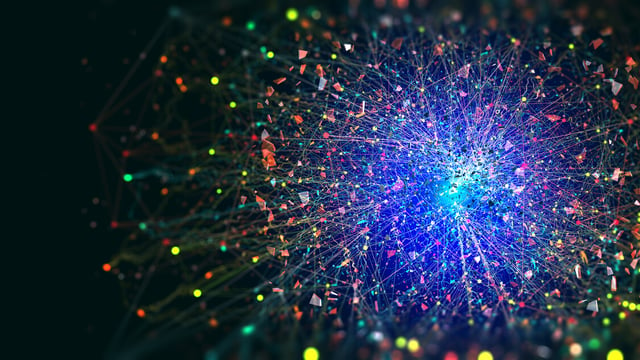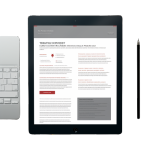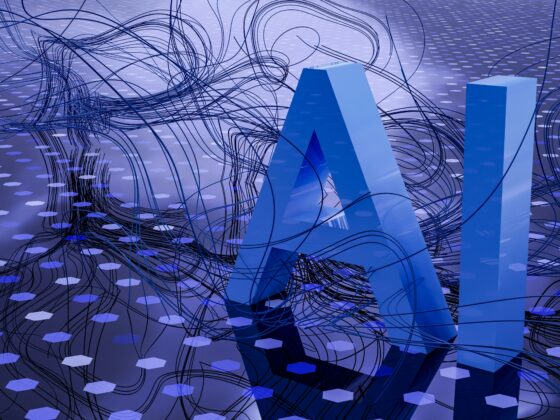
Would you hire an electrician to fix your toilet? Of course not.
Yet that’s exactly what hospitality is doing when we rely on general-purpose AI to solve industry-specific problems. You end up with the wrong tool solving the wrong problems, and the results show it.
AI was trained on the internet, becoming a fluent translator of the data it was trained on, mainly finance, healthcare, and law. It can draft contracts, identify billing fraud, and diagnose diseases. Yet, when it comes to the hospitality industry—an ecosystem responsible for more than half a trillion dollars in finding and supporting their next guest—most AI solutions are still largely illiterate. They don’t understand us. They weren’t trained to.
Why? Because AI learns from data, and the hotel industry hasn’t been part of the conversation. Less than 0.004% of the data that feeds Large Language Models (LLMs) that power generative AI platforms comes from our industry. Compare that to the legal field (76%), finance (14%), or healthcare (10%), and it becomes clear: AI understands lawyers, doctors, and bankers far better than it understands hoteliers.
We need AI that works; not just educated, generalized guessing. Models that understand when you’re talking about pace, you’re not trying to run a marathon.
Most off-the-shelf AI solutions available to hospitality businesses today are retrofits—generic models lightly adapted to hotel workflows. They don’t understand the nuances of seasonality, local demand shifts, booking channel behavior, or the cause-and-effect patterns that dictate occupancy, revenue, and guest satisfaction.
The industry doesn’t need another overlay. It needs intelligence born from its own data.
From Predictive to Causal: A Smarter Way to Optimize Hotel Performance
Let me give you a story. There’s a photo on my desk of my son Ethan, sitting in a highchair. Cute baby (I’m biased). Smiling. Frosting on his face. It’s a moment. But it doesn’t tell the story.
Now, imagine watching the video. You see the candle. The song. The moment he smashes cake into his hair. The laughter. The rhythm. The why behind the smile, which is my dog Charlie licking the icing off his hand…Something I didn’t notice until I watched the movie.
That’s the difference between most AI—a static picture—and what hospitality needs: a living, breathing, contextual movie. That’s causal AI, which gives contextual intelligence to hotelier operators who would have had too much data to work through to know the full reason why something was happening and why they should take a specific action at a specific time.
This is one of the most important breakthroughs in AI for hospitality—the shift from predictive models (the photograph) to causal AI (the movie). Traditional AI tools focus on pattern recognition—forecasting what’s likely to happen based on previous trends. But prediction without explanation has limits. It tells us what might happen, but not why.
Imagine your city hosts a yearly festival, and you’re determining how to price your rooms for the upcoming year. Your revenue management system identifies that during the dates of the festival, there’s a spike in reservations and suggests that you increase room rates slightly during the festival period due to higher demand.
However, a deeper investigation—facilitated by causal AI—incorporates real-time demand feeds that reveal if you outprice competitors by 5% (while offering a special bundled package, including tickets and transportation to the festival) influences bookings more precisely to maximizes total revenue.
Causal AI delivers more granular insights. By identifying the actual drivers of guest behavior—price elasticity, events, weather changes, marketing triggers, even local reviews—it uncovers the levers that truly influence demand and revenue. These insights aren’t just descriptive, they’re prescriptive. They enable hoteliers to see the projected ROI of a decision, understand the drivers behind it, act with clarity, and then measure whether it delivered, feeding the system smarter for next time.
As an example, one hotel management platform processes more than 4 billion data points from 47 different sources every hour. By tapping into a purpose-built causal model trained specifically for the hospitality environment, it enables hoteliers to forecast demand with up to 95% accuracy. That translates to an 18% average increase in RevPAR and a 27% lift in direct bookings for early adopters. Just as important, it gives operators back over 15 hours a week by automating time-consuming tasks that used to rely on human intuition and spreadsheets.
Why Hospitality Needs AI That Speaks Its Language
The hospitality sector is complex, fast-moving, and hyper-local. A hotel’s performance is shaped not just by internal variables, but by a constantly shifting external context—everything from competitor pricing to regional events, labor availability, flight trends, and online sentiment.
To navigate this complexity, AI models must do more than process information—they must understand the industry’s language, logic, and levers. A hospitality-trained AI model doesn’t just see data; it understands its implications in context. It can detect whether competitors are changing their rates because of an event or because you’re changing yours. It recognizes causality, not just correlation.
This is why the creation of hospitality-native models marks a turning point. When AI is built on the foundation of industry-specific data, its recommendations move beyond speculative and become strategic. It becomes a partner in revenue planning, guest engagement, and operational efficiency.
From Industry to Address to Guest: The New Intelligence Stack
Hospitality intelligence has to work on three levels—and it takes a purpose-built model to connect them all:
- Industry-level understanding: AI must be deeply trained on hospitality language, logic, and causal signals—it understands what drives pacing curves, seasonality, and revenue strategy, and it knows how to explain them using language that a hotelier would use.
- Property-level context: AI should interpret the digital footprint of each property in real-time—structuring data from systems and the web to deliver hyper-local, contextual intelligence.
- Guest-level personalization: AI must bridge insights to action—using guest behavior, preferences, and history to inform tailored pricing, messaging, and experiences, always with transparency and trust.
This intelligence stack allows for a vertical AI model that operates, versus a broad, horizontal AI that merely answers. We need purpose-built AI models FOR hospitality that allow for fewer mistakes, better action, and most importantly: trust.
Hospitality’s AI Moment Is Here
Despite this industry succumbing to a $550 billion expense to acquire and retain guests alone—which is a sea anchor that drags this industry down—hospitality has only just begun its AI journey. And while many sectors have been reaping the benefits of domain-trained AI for years, hotels are only now gaining access to tools that truly speak their language.
The early results are compelling: more accurate forecasts, higher revenue, lower costs, and better guest experiences. But the bigger story is what happens next. As hospitality-native AI continues to mature, it will increasingly drive competitive differentiation.
For hoteliers, the message is clear: generic AI might offer answers, but industry-trained AI that is purpose-built, explainable, and grounded in hospitality DNA, delivers results and empowers hoteliers to lead with vision and impact.






